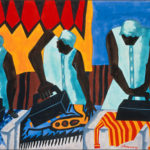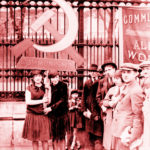
Solidarity and Continued Struggle: International Women’s Strike on May Day
March 8th taught us the power of unified action. We marched, struck work, boycotted and rallied. We will do the same on May Day.

March 8th taught us the power of unified action. We marched, struck work, boycotted and rallied. We will do the same on May Day.

It was activists like Black Panther Bob Lee and the original Rainbow Coalition who created change in our nation, by daring to enter distant neighborhoods and forge alliances. As a political symbol, the Rainbow didn’t refer just to a series of colors; it signified an arc of connection between different places and people. For Lee and others who participated with him in struggle, this was the only possible starting point for revolutionary solidarity.

As the consumer-oriented liberalism of Bill Gates and Steve Jobs gave way to the technological authoritarianism of Elon Musk and Peter Thiel, this strange foundation paved the way for “neoreaction,” or, in a distorted echo of Eliezer Yudkowsky’s rationalist vision, the “Dark Enlightenment.”

If we want to speak of a working-class party, we need to begin from the working class as it exists, not as we would like it to be. Yet what considers itself a blueprint will not and cannot concern itself primarily with a concrete analysis of class composition. The organizational questions it can address are only those posed from above, while those raised from below go unacknowledged.

To strike is to challenge and block the forms of producing and reproducing life in homes, in neighborhoods, in workplaces. It is to connect violence against women with the specific political nature of the current forms of exploitation of the production and reproduction of life. The strike was the key that enabled us to unite those two things.

It’s only by acknowledging the roots of identity politics in the emancipatory movements of the past that we can begin the collective work of formulating a positive alternative.

I would like to briefly return to what might be the central problem of political subjectivity, where Marxist thought encountered its limit and ultimately hit an impasse: the party-form and its conflictual relationship with another “form,” that of the “women’s movement” and, consequently, feminism.

A curious symptom of the resistance to theory on the Anglo-American left is a fixation on the Enlightenment. The striking paradox of this fixation is the anti-intellectual appropriation of a trend of European philosophy, which is credited with introducing the now inviolable standards of secularism, republicanism, rights, freedoms, and equality.

Our social conditions place demands upon our struggles. They force us to change what it means to strike, requiring that such a practice orient itself to structures of care, to sex and domestic work, to global chains of capitalist, state, and intimate violence. A feminist practice adequate to our times can only be an anti-capitalist feminism.

Domestic workers’ activism is not merely a sectoral struggle, but a strike against the gendered division of labor and a fight for bodily autonomy – both are indispensable parts of a broader struggle to undermine capital’s capacity for exploitation.
Tags: Inquiry